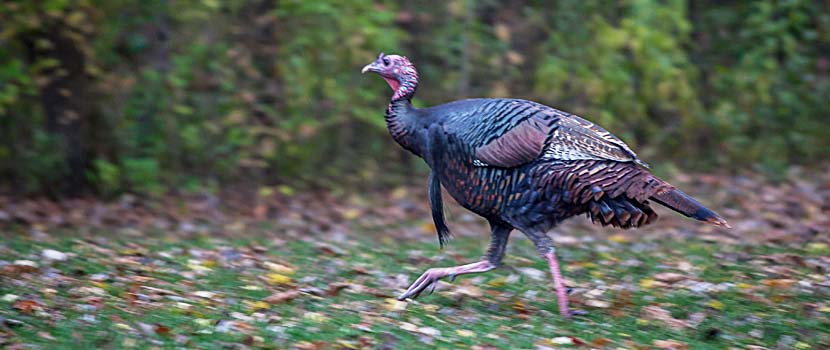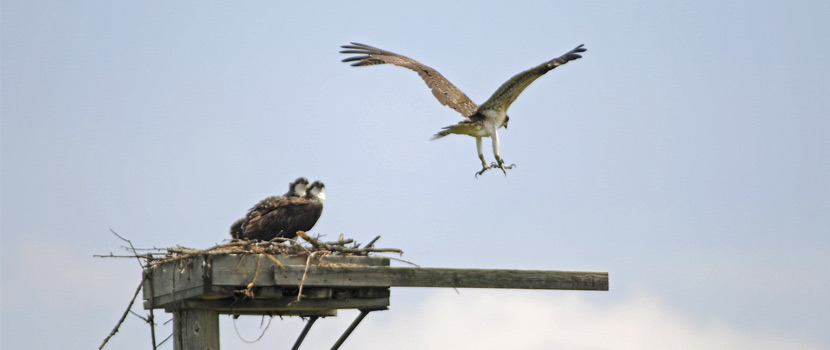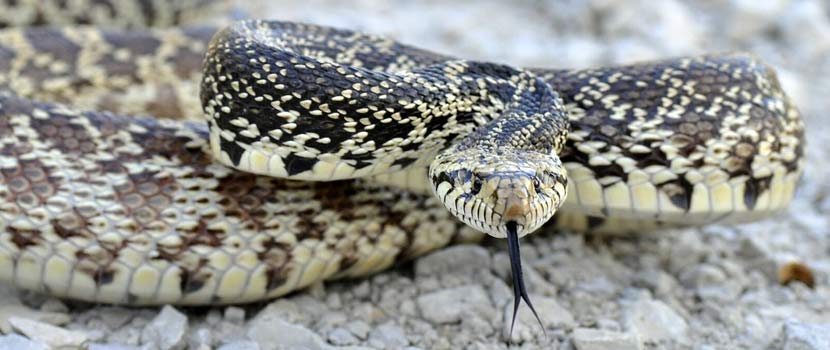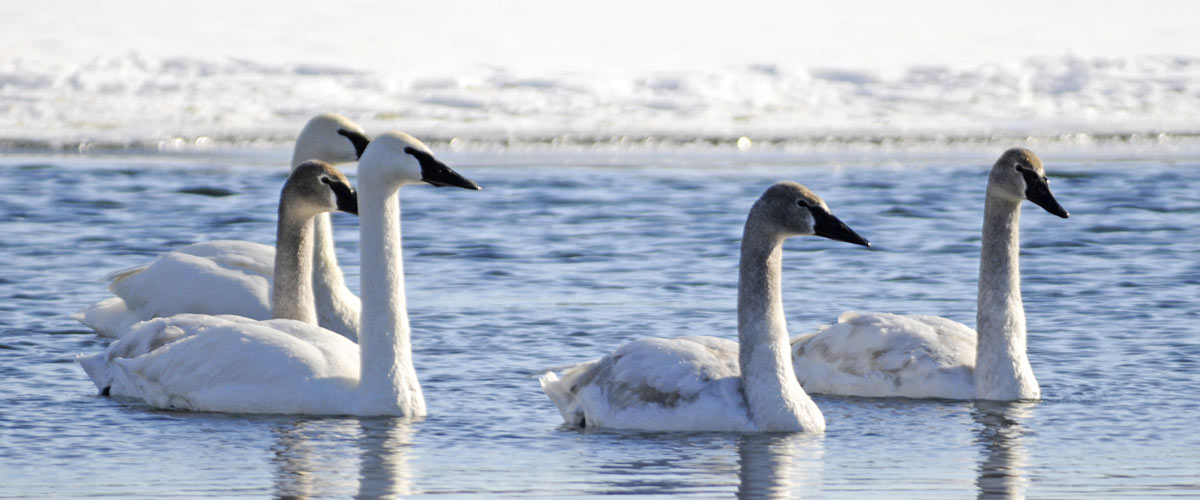
Reintroducing Wildlife at Three Rivers
By: John Moriarty
October 15, 2018
Category: Resource Management
Since the 1960s, Three Rivers Park District has restored and managed natural habitats to provide proper conditions for wildlife species to thrive, including reintroduced species. Three Rivers has considered many species of wildlife to reintroduce, but only a few have been selected.
When deciding which species to reintroduce, we think of species that would have naturally been in the parks and would be beneficial to reintroduce. We then look at several factors to see if it will work.
- Habitat: We review a species’ habitat needs to be sure we have existing habitat or can create habitat to meet all of their requirements. This includes having the correct food, proper breeding and nesting sites, enough space for wildlife to live, and areas suitable for hibernation. If you are missing one piece, reintroduction will not be successful.
- Availability: Many species are able to find and colonize existing or restored habitats without help, but some species have been eliminated from the region and are unable to get back on their own. Because of this, we consider the availability of the species from other sources. Some wildlife are difficult to collect or are federally protected and require a permit to collect.
- Management: Next, we evaluate the long-term management requirements. Some species need continual management to maintain their population, which can require more effort than we are able to commit.
- Public interest: Finally, we assess potential public interest in a reintroduction. Some species, like swans and butterflies, are viewed in a positive light and will encourage people to visit the parks.
Some of the species considered but not reintroduced, include: bison and bear, which need larger areas to roam and may be considered dangerous by some park users; prairie chickens, which need larger areas than Three Rivers can provide; and Karner blue butterflies, which are listed as federally endangered and require a permit to capture from the wild that we have not been able to obtain.
The reintroduction of a species is a long-term process that can take years, if not decades, to be successful. The following are short summaries of some of the successes and ongoing efforts at Three Rivers.
Mallards and Canada Geese
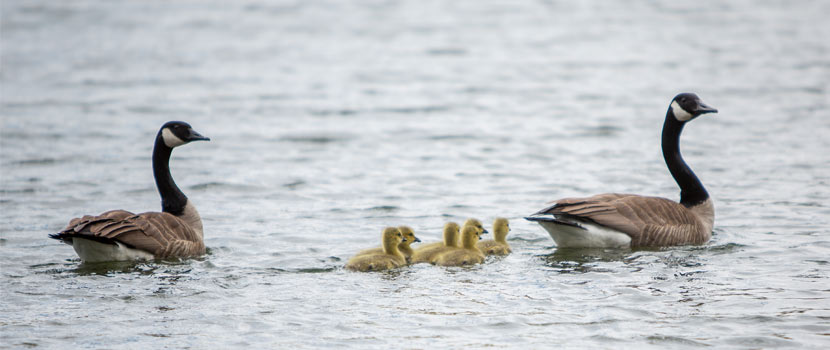
In the 1960s, Three Rivers staff raised and released mallards and Canada geese in the Park District. While being raised, they were kept in fenced refuges in park reserves. Staff fed them and kept the water open year-round. This program was very successful – some would say too successful – and was ended in the late 1960s when trumpeter swans were brought to the Park District.
Trumpeter Swans
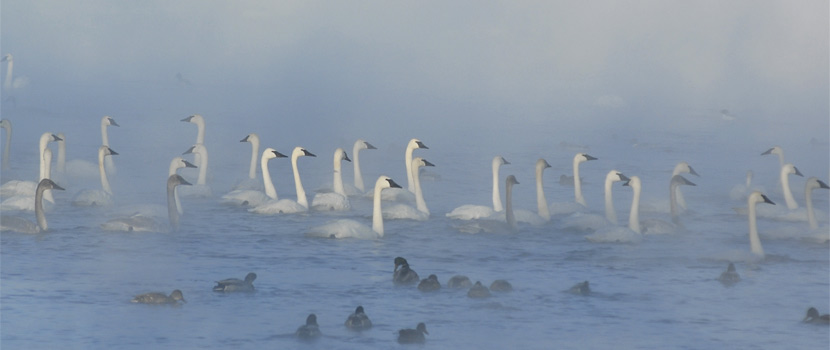
Trumpeter swans are a major success story at Three Rivers. The first swans were brought to the Park District in 1966. Three Rivers maintained an active captive-rearing program for over 25 years.
The Minnesota Department of Natural Resources started supplemental swan releases in 1987 with swan eggs collected from Alaska. By 2000, the free-flying population reached 1,000, and recent surveys show the state-wide population approaching 20,000. Nesting swans are found in all Three Rivers park reserves.
Ospreys
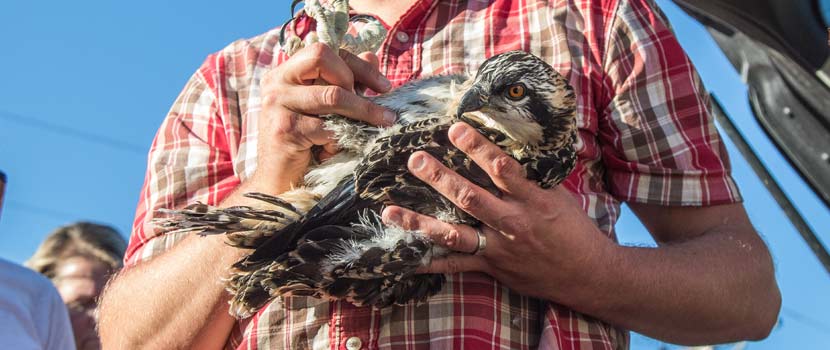
Osprey reintroductions began in 1984 with chicks collected from central Minnesota. The chicks were raised and released in Carver Park Reserve. The first pair nested in Carver in 1988. This was the first nesting pair of osprey in the metro area in over 75 years.
Three Rivers worked with the Raptor Center at the University of Minnesota to expand the releases to other areas of the metro. The Raptor Center released the last chicks in 1995.
The number of osprey nests in the metro has increased from 24 in the year 2000 to over 100 in 2017. Osprey nests can be found in or near most of the parks in Three Rivers. Volunteers continue to monitor ospreys throughout the metro.
Read all about the great success story of ospreys.
Beavers
Three Rivers reintroduced beavers to the area in the 1970s by relocating a limited number of beavers from northern Minnesota. Beavers have become common in most Three Rivers parks because of natural range expansion – not due to the reintroductions.
Bullsnakes
In 1991, 18 bullsnakes from Sherburne National Wildlife Refuge were reintroduced into the Crow-Hassan Park Reserve prairie. Three Rivers Wildlife staff monitored the snakes for the first few years after release. They found that the snakes were using large areas of the park. There were scattered sightings of bullsnakes over the next 20 years.
The Park District initiated a bullsnake survey in 2014, and over 120 adult snakes were captured over three years from all areas of the prairie. Numerous hatchling snakes were also seen.
The bullsnake population is now well established at Crow-Hassan. Additional reintroductions in Carver and Murphy-Hanrehan Park Reserve prairies are being reviewed.
Plains Hog-nosed Snakes
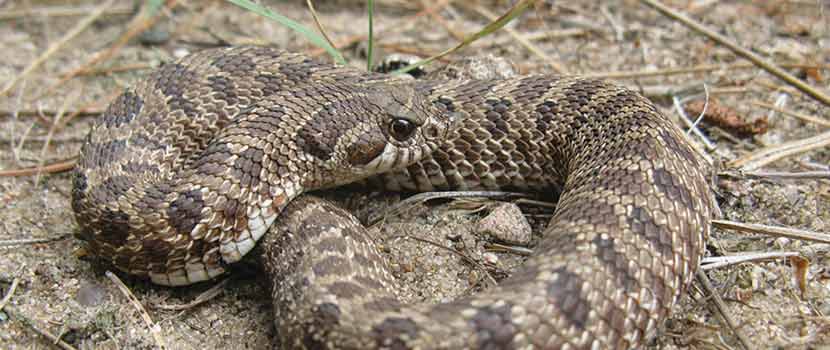
Plains hog-nosed snakes are currently being reintroduced to the Crow-Hassan prairie. In 2017, Wildlife staff released eight snakes from Sherburne National Wildlife Refuge into Crow-Hassan and tracked them through the summer. Additional snakes are planned for release in 2018 and 2019.
We will not know the success of this reintroduction for a number years because of the slow population growth and the secretive nature of the plains hog-nosed snakes.
Regal Fritillary Butterflies
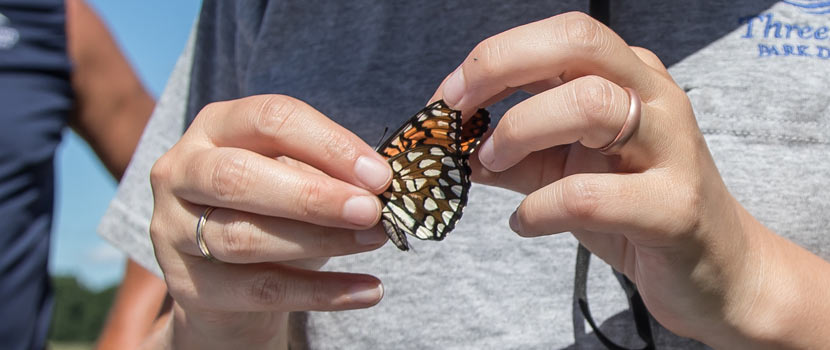
The regal fritillary butterfly is the first insect to be reintroduced by Three Rivers. Regal fritillary caterpillars only feed on violet leaves, so prior to releasing the butterflies, the Park District planted 10,000 violet plants in Crow-Hassan to supplement existing violets already on the prairie.
Wildlife staff collected 20 butterflies in late summer of 2016 from a prairie in southeast Minnesota and released them into the Crow-Hassan prairie.
The butterflies laid eggs for several weeks after release.
In summer 2017, staff observed regal fritillaries while conducting surveys across the prairie, but they were not abundant.
In early July 2018, 143 butterflies were counted on a set transect (area of land chosen for observation) with many more seen away from the transect. This was a ten-fold increase over 2017. We will continue to conduct surveys in the future to assess the growth of the population.
Want to Learn More?
Next time you’re out in the parks, notice the wildlife around you and see if you can spot a reintroduced species. If you happen upon a regal fritillary, an osprey or even some Canada geese, consider yourself lucky; there was a time when they were nowhere to be found.
Interested in learning more about species reintroduction? The Three Rivers website offers more information on species reintroduction in the Park District. Look for more detailed reintroduction accounts in future blog posts.
About the Author
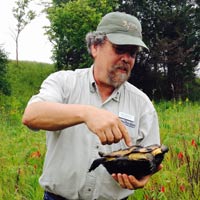
John Moriarty is the Senior Manager of Wildlife at Three Rivers Park District and has been with the Park District for 15 years. He has been involved in many of the wildlife restoration efforts and initiated the snake and butterfly efforts. John has led several projects to increase prairie habitat in the Park District. John likes exploring natural areas and looking for all types of plants and animals, but especially turtles.
Related Blog Posts
Species Spotlight: Wild Turkeys
By: John Moriarty
Did you know there was a time when turkeys didn't exist in Minnesota? Learn all about this Thanksgiving staple in this post from the archive, including how they came to thrive in our area and what to do if they're causing trouble in your yard.
Osprey Reintroduction: The Great Success Story
By: Steven Hogg
Ospreys used to be very common in southern Minnesota, but they disappeared from the Twin Cities after World World II. Learn about the program to bring these amazing birds back and how wildlife can survive in an urban area when given the right tools for success.
All About Bullsnakes — And How They Found A Home in Three Rivers
By: John Moriarty
Did you know that the longest snake in Minnesota can be found in Three Rivers Park District? Bullsnake populations have declined in the Twin Cities due to habitat loss, but thanks to reintroduction efforts, they have found a home in Crow-Hassan Park Reserve.
